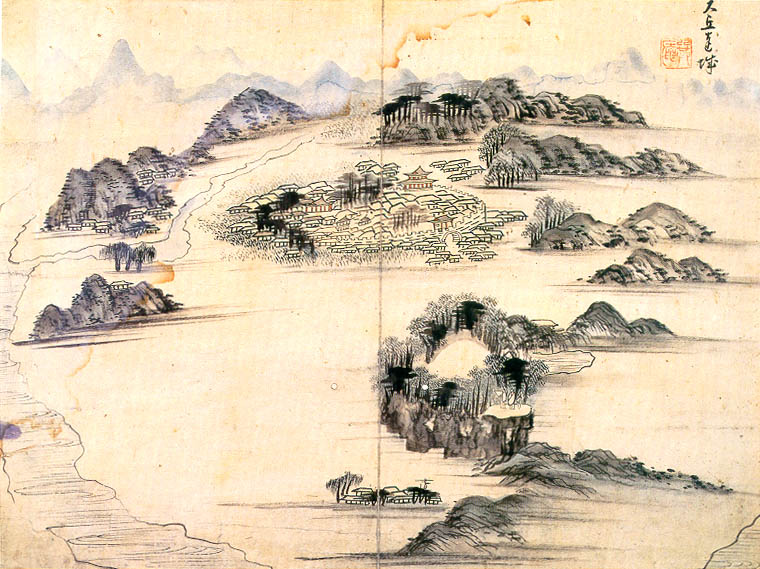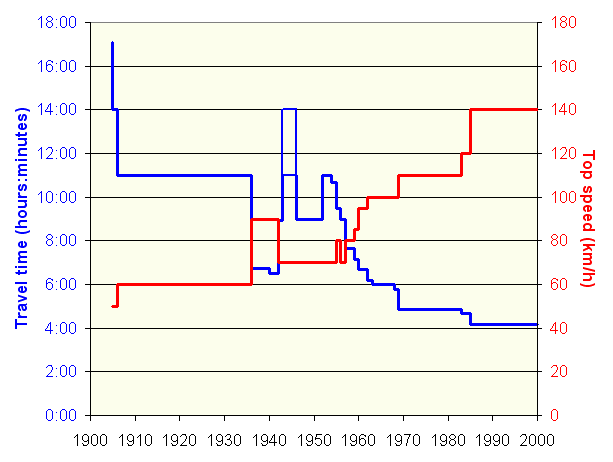|
Seodaegu Station
Seodaegu station is a new railway station on the Gyeongbu high-speed railway newly established in Ihyeon-dong, Seo District, Daegu Seo District () is a Administrative divisions of South Korea, ''gu'', or district, in western Daegu, South Korea. A major transportation nexus, it is transected by the Gyeongbu Expressway, Gyeongbu, Guma Expressway, Guma, and Jungang Expressway, ..., South Korea. This station was opened on March 31, 2022. References Korea Train Express stations Railway stations in Daegu Dong District, Daegu Railway stations in South Korea opened in 2022 {{SouthKorea-railstation-stub ... [...More Info...] [...Related Items...] OR: [Wikipedia] [Google] [Baidu] |
Seo District, Daegu
Seo District () is a Administrative divisions of South Korea, ''gu'', or district, in western Daegu, South Korea. A major transportation nexus, it is transected by the Gyeongbu Expressway, Gyeongbu, Guma Expressway, Guma, and Jungang Expressway, Jungang Expressways. It is also connected to the downtown region and to Dalseong County by Daegu Subway Line 2. The Gyeongbu Line railroad also passes through Seo-gu, but no major stations are located there. Seo-gu stands at the western edge of Daegu's urbanized region. It is bounded by the downtown Jung District, Daegu, Jung District to the east, by Dalseo District to the south and Buk District, Daegu, Buk District to the north, and by the largely rural area of Dalseong County to the west. Most of the western third of Seo-gu is taken up by the rural Sangjungi-dong precinct. Twin towns – sister cities Seo District is Sister city, twinned with: * Bacolod, Philippines * Angeles City, Philippines * Hexi District, Tianjin, Hexi (Tianjin ... [...More Info...] [...Related Items...] OR: [Wikipedia] [Google] [Baidu] |
Daegu
Daegu (; ), formerly spelled Taegu and officially Daegu Metropolitan City (), is a city in southeastern South Korea. It is the third-largest urban agglomeration in South Korea after Seoul and Busan; the fourth-largest List of provincial-level cities of South Korea, metropolitan city in the nation with over 2.3 million residents; and the second-largest city after Busan in the Yeongnam Regions of Korea, region in southeastern South Korea. Daegu and the surrounding North Gyeongsang Province are often referred to as Daegu-Gyeongbuk, with a total population of over 5 million. Daegu is located in south-eastern Korea about from the coast, near the Geumho River and its mainstream, Nakdong River in Gyeongsang Province. The Daegu basin is the central plain of the Yeongnam List of regions of Korea, region. In ancient times, the Daegu area was part of the proto-kingdom Jinhan. Subsequently, Daegu came under the control of the Silla Kingdom, which unified the Korean Peninsula. During th ... [...More Info...] [...Related Items...] OR: [Wikipedia] [Google] [Baidu] |
South Korea
South Korea, officially the Republic of Korea (ROK), is a country in East Asia. It constitutes the southern half of the Korea, Korean Peninsula and borders North Korea along the Korean Demilitarized Zone, with the Yellow Sea to the west and the Sea of Japan to the east. Like North Korea, South Korea claims to be the sole legitimate government of the entire peninsula and List of islands of South Korea, adjacent islands. It has Demographics of South Korea, a population of about 52 million, of which half live in the Seoul Metropolitan Area, the List of largest cities, ninth most populous metropolitan area in the world; other major cities include Busan, Daegu, and Incheon. The Korean Peninsula was inhabited as early as the Lower Paleolithic period. Gojoseon, Its first kingdom was noted in Chinese records in the early seventh century BC. From the mid first century BC, various Polity, polities consolidated into the rival Three Kingdoms of Korea, kingdoms of Goguryeo, Baekje, and Sil ... [...More Info...] [...Related Items...] OR: [Wikipedia] [Google] [Baidu] |
Korail
The Korea Railroad Corporation () is the national railway operator in South Korea. It is branded as KORAIL () and changed its official Korean name () in November 2019. Currently, KORAIL is a public corporation, managed by Ministry of Land, Infrastructure and Transportation. KORAIL operates intercity/regional, commuter/metro and freight trains throughout South Korea, and has its headquarters in Daejeon. History Historically, the South Korean railway network was managed by the ''Railroad Administration Bureau'' of the Ministry of Transportation before 1963. On 1 September 1963, the bureau became an agency that was known as ''Korean National Railroad'' (KNR) in English. In the early 2000s, the split and public corporatization of KNR was decided by the South Korean government, and in 2003, KNR adopted the current KORAIL logo in blue to prepare for corporatization. On 1 January 2005, KNR was split into ''Korea Railroad Corporation'' (KORAIL), which succeeded railway operati ... [...More Info...] [...Related Items...] OR: [Wikipedia] [Google] [Baidu] |
Gyeongbu High-speed Railway
The Gyeongbu high-speed railway, also known as Gyeongbu HSR, is South Korea's first high-speed rail line from Seoul to Busan. KTX high-speed trains operate three sections of the line: on 1 April 2004, the first between a junction near Geumcheon-gu Office station, Seoul and a junction at Daejeonjochajang station north of Daejeon, and a second between a junction at Okcheon station, southeast of Daejeon, and a junction near Jicheon station, north of Daegu entered service; then on 1 November 2010, the third section, between a junction west of Daegu and Busan became operational. The missing gaps across the urban areas of Daejeon and Daegu were in construction for an expected opening in 2014, separate tracks into Seoul Station were also planned. The temporary ends of the three sections were connected to the parallel conventional Gyeongbu Line by tracks that will serve as interconnector branches upon the completion of the entire line. On 1 August 2015, construction on urban areas ... [...More Info...] [...Related Items...] OR: [Wikipedia] [Google] [Baidu] |
Gyeongbu Line
The Gyeongbu line (''Gyeongbuseon'') is a railway line in South Korea and is considered to be the most important and one of the oldest in the country. It was constructed in 1905, connecting Seoul with Busan via Suwon, Daejeon, and Daegu. It is by far the most heavily travelled rail line in South Korea. All types of Korea Train Express, high-speed, express, local, and freight trains provide frequent service along its entire length. History In 1894–1895, the Empire of Japan and Qing Dynasty, Qing China fought the First Sino-Japanese War for influence over Korea. Following the war, Japan competed with the Russian Empire's railway expansion in Northeast Asia, which led it to seek the right from the Korean Empire to build a railway from Busan to Keijō. This railway line was intended by Japan to solidify its strategic positions against Russia, which it would later go to Russo-Japanese War, war. Surveying began in 1896, and in spite of local protests, the Korean Empire gave Jap ... [...More Info...] [...Related Items...] OR: [Wikipedia] [Google] [Baidu] |
Korea Train Express Stations
Korea is a peninsular region in East Asia consisting of the Korean Peninsula, Jeju Island, and smaller islands. Since the end of World War II in 1945, it has been politically divided at or near the 38th parallel between North Korea (Democratic People's Republic of Korea; DPRK) and South Korea (Republic of Korea; ROK). Both countries proclaimed independence in 1948, and the two countries fought the Korean War from 1950 to 1953. The region is bordered by China to the north and Russia to the northeast, across the Amnok (Yalu) and Duman (Tumen) rivers, and is separated from Japan to the southeast by the Korea Strait. Known human habitation of the Korean peninsula dates to 40,000 BC. The kingdom of Gojoseon, which according to tradition was founded in 2333 BC, fell to the Han dynasty in 108 BC. It was followed by the Three Kingdoms period, in which Korea was divided into Goguryeo, Baekje, and Silla. In 668 AD, Silla conquered Baekje and Goguryeo with the aid of the Tang dyna ... [...More Info...] [...Related Items...] OR: [Wikipedia] [Google] [Baidu] |
Railway Stations In Daegu
Rail transport (also known as train transport) is a means of transport using wheeled vehicles running in tracks, which usually consist of two parallel steel rails. Rail transport is one of the two primary means of land transport, next to road transport. It is used for about 8% of passenger and freight transport globally, thanks to its energy efficiency and potentially high speed.Rolling stock on rails generally encounters lower frictional resistance than rubber-tyred road vehicles, allowing rail cars to be coupled into longer trains. Power is usually provided by diesel or electric locomotives. While railway transport is capital-intensive and less flexible than road transport, it can carry heavy loads of passengers and cargo with greater energy efficiency and safety. Precursors of railways driven by human or animal power have existed since antiquity, but modern rail transport began with the invention of the steam locomotive in the United Kingdom at the beginning of the 19th c ... [...More Info...] [...Related Items...] OR: [Wikipedia] [Google] [Baidu] |
Dong District, Daegu
Dong District () is a '' gu'' (district) in northeastern part of Daegu of South Korea. Daegu itself lies in the southeastern part of the Korean Peninsula. It has a population of 343,678. The district covers 182.35 km², for about 20% of Daegu's total area. Dong-gu first emerged as the "eastern district office" () in 1938. It achieved ''gu'' status in 1963. In 1998, the administrative divisions were reorganized, and the former 26 ''dong'' were reorganized as 20 ''dong''. Administrative divisions * Ansim-dong * Bangchon-dong * Bullobongmu-dong * Dongchon-dong * Dopyeong-dong * Gongsan-dong * Haean-dong * Hyomok-dong * Jijeo-dong * Sinam-dong * Sincheon-dong Education International schools in Dong-gu include: *Daegu International School *Daegu Chinese Elementary School or Korea Daeguhwagyo Elementary School (한국대구화교초등학교) [...More Info...] [...Related Items...] OR: [Wikipedia] [Google] [Baidu] |



